NUR 2790Exam 2 Nursing 3/MODULE 3,4 &5 / COMPLETE GUIDE TO GRADE A
Document Content and Description Below
Here are some key focus areas for Exam 2 which covers Modules 3, 4, & 5. Review course modules for information. You are responsible for all content in the chapters, power points, lecture notes, tables... , red flags, figures, boxes, with special focus points on the following topics: Module 3 Tissue Integrity • Relate principles of triage to prioritize care delivery in a disaster situation. • Appraise the roles of the nurse in emergency preparedness and response. • Prioritize nursing care for the patient during the acute phase of burn injury. • Develop a comprehensive plan of care for a patient with alteration in tissue integrity. • Describe the physiological process involved in the maintenance and restoration of health and wellness, across the lifespan, as it relates to tissue integrity. Module 4 Gas Exchange • Develop a comprehensive plan of care for a patient with alteration in Gas Exchange. • Describe the physiological process involved in the maintenance and restoration of health and wellness, across the lifespan, as it relates to Gas Exchange. • Evaluate laboratory data and clinical manifestations to determine the adequacy of oxygenation and ventilatory interventions. • Plan nursing care for the patient being mechanically ventilated. ➢ Mass casualty event – paramedic, Hospital incident commander-can end a mass casualty event, public information officer, triage officer, medical command physician – hierarchy and roles ➢ Review RN delegation of tasks Never delegate what you can’t EAT (evaluation, assessment, and teaching) also invasive stuff ➢ Specialty teams available Trauma, Anesthesia, rapid response, stroke team, and forensic nursing ➢ CPR – family presence Recommended so they can see what’s going on ➢ Consider vulnerable populations – establishing trust Children, elderly, rape victim, intellectual disability, homeless, migrant workers it’s important to establish trust ➢ Priority assessments i.e. which color would nurse focus on first? Red; patient arrives with O2 mask on? Assess airway and make sure he/she is having effective respirations o Gas Exchange ➢ Understand Rapid Response Team role The respond to emergencies hopefully before the person codes ➢ Pulmonary embolus – patho? Clot in the lungs Risk factors? DVT, a. fib, post surgical, long bone fracturs S/S you may see? SOB, dyspnea, cyanotic, anxiety Assessment Treatment? Oxygen, elevated HOB, anticoagulant Test? D-dimer will be elevated ➢ Anticoagulants –monitor PTT and PLT for heparin (hold, call doctor, and assess for bleeding if PLT are out of range) is for heparin patient education? Soft tooth brush, electric razor, avoid NSAIDs, ibuprofen, injuries, and check for bruising and occult blood ➢ ABGs for respiratory issues i.e. COPD? Respiratory Acidosis ph low (7.35-7.45), co2 high (45-35), bicarb low (22-26) ➢ Common medications for intubated patients – Propofol, sedatives, pain meds, antianxiety, Pepcid (stress ulcers) what to monitor, patient education ➢ Mechanical ventilation – assessment PEEP of 20cm (it’s too high which can cause a pneumothorax) treatment- prevent VAP ETT removed by suction and provide oral care Low pressure alarm is cause by disconnect; high pressure alarm is caused by patient bucking or coughing If you can’t figure out why the alarm is going off what do you do? Bag them Agitated patient what does the nurse assess? Assess and then treat what is causing the agitation Dyspneic with normal O2 sat? Assess and try to find out what is making the patient short of breath. If it’s pain give morphine if it’s anxiety give benzos. ➢ Flail chest-anticipated interventions? Monitor educate patient to splint when coughing and provide pain management as long as gas exchange is good. ➢ Understand refractory hypoxemia- wide spread inflammatory response seen in what disease process? ARDS (doesn’t respond to O2) Module 5 objectives • Plan collaborative care for patients experiencing common dysrhythmias. • Describe the physiological process involved in the maintenance and restoration of health and wellness, across the lifespan, as it relates to Perfusion. • Educate patients and families about current procedures and other interventions for common dysrhythmias. • Appraise evidence-based practice in the current treatment of cardiac arrest. o Perfusion ➢ Understand ECG complex – think about what is going on in the heart if there is no P wave with every QRS, or if a segment lengthens- Blocks What part of the conduction system of the heart controls the rate? SA node What wave is not normally seen on ECG? U wave ➢ Common medications – i.e. beta blockers, anticoagulants, calcium channel blockers – know why prescribed and patient education i.e. take own pulses; what two meds will patient with afib have long term? Anticoagulant and Cardizem (Calcium channel blocker) Why? Because if they don’t the patient will be a risk for clots and stroke ➢ You notice a change in rhythm on patient telemetry – what do you do? Assess patient and then do a 12 lead and call provider ➢ Treatment for VFib – priority before shock? Defibrillate ➢ Substance abuse cocaine and meth are usually the cause of dysthymias of patient’s 20-40 so ask if they are doing any illegal drugs ➢ Identify rhythm strips [https://www.practicalclinicalskills.com/ekg-practice-drill] ➢ What treatments would the RN initiate for fatal dysrhythmias? Vfib and vtach ➢ CHF – assessment for physiologic alterations during bradycardia and tachycardia ➢ Asystole- assess patient and check leads if patient is no responsive start compressions ➢ Bradycardia- assess patient and check leads administer atropine ➢ What is normal cardiac output? 6L/min ➢ Pacemaker- patient education? don't lift, stay away from electronics over chest, no mri, pacer teaching, keep your card with you, where medic alert bracelet, no arms over head, watch for infection ➢ What patient would need an external pacemaker? Patient who is symptomatic bradycardia and is waiting for a permanent pacemaker to be put in. Usually the patient that has the 2nd and 3rd degree blocks ➢ ICD- patient education i.e. avoid what? Electromagnetic area because magnets will turn them off so avoid MRIs [Show More]
Last updated: 2 years ago
Preview 1 out of 6 pages

Buy this document to get the full access instantly
Instant Download Access after purchase
Buy NowInstant download
We Accept:

Reviews( 0 )
$17.50
Can't find what you want? Try our AI powered Search
Document information
Connected school, study & course
About the document
Uploaded On
Aug 07, 2021
Number of pages
6
Written in
Additional information
This document has been written for:
Uploaded
Aug 07, 2021
Downloads
0
Views
50


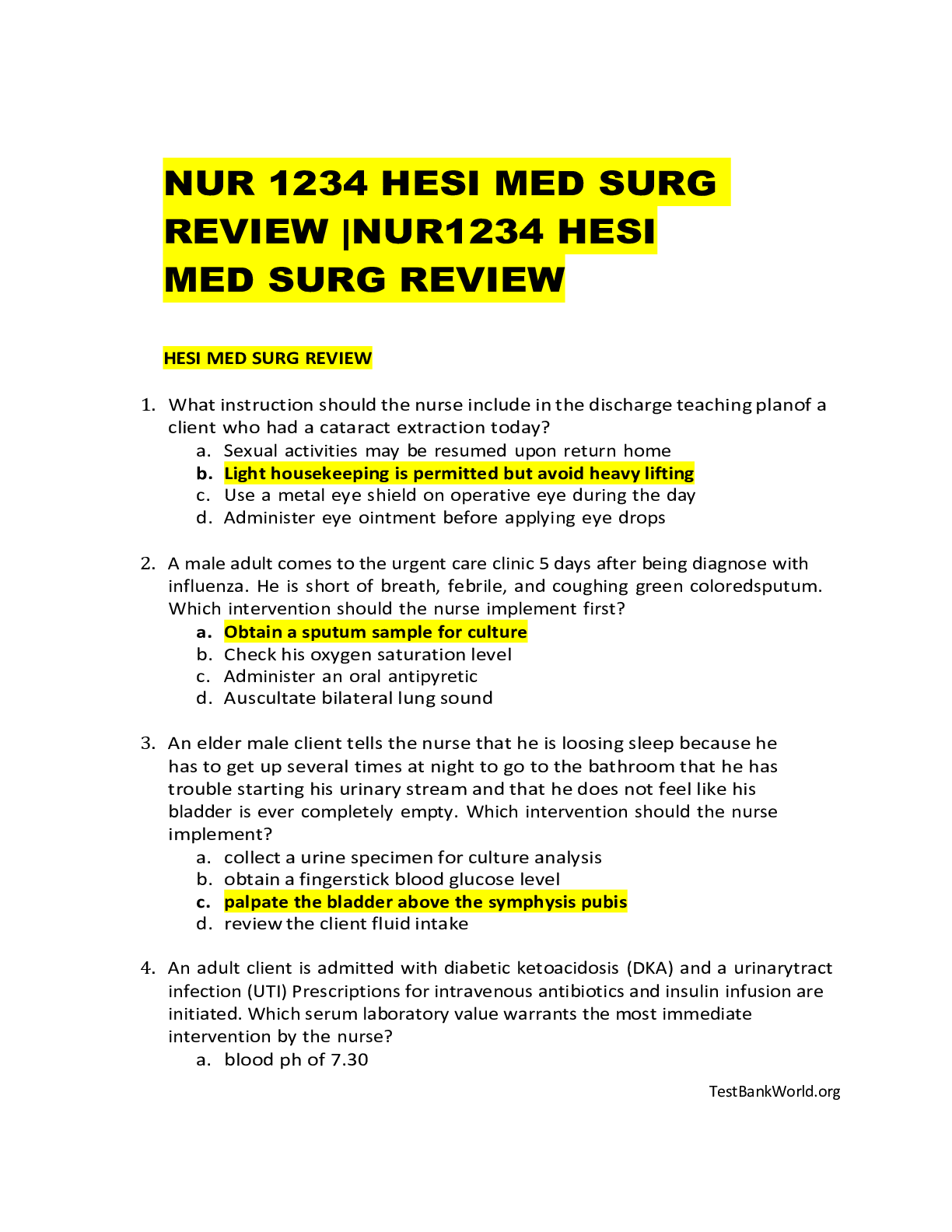

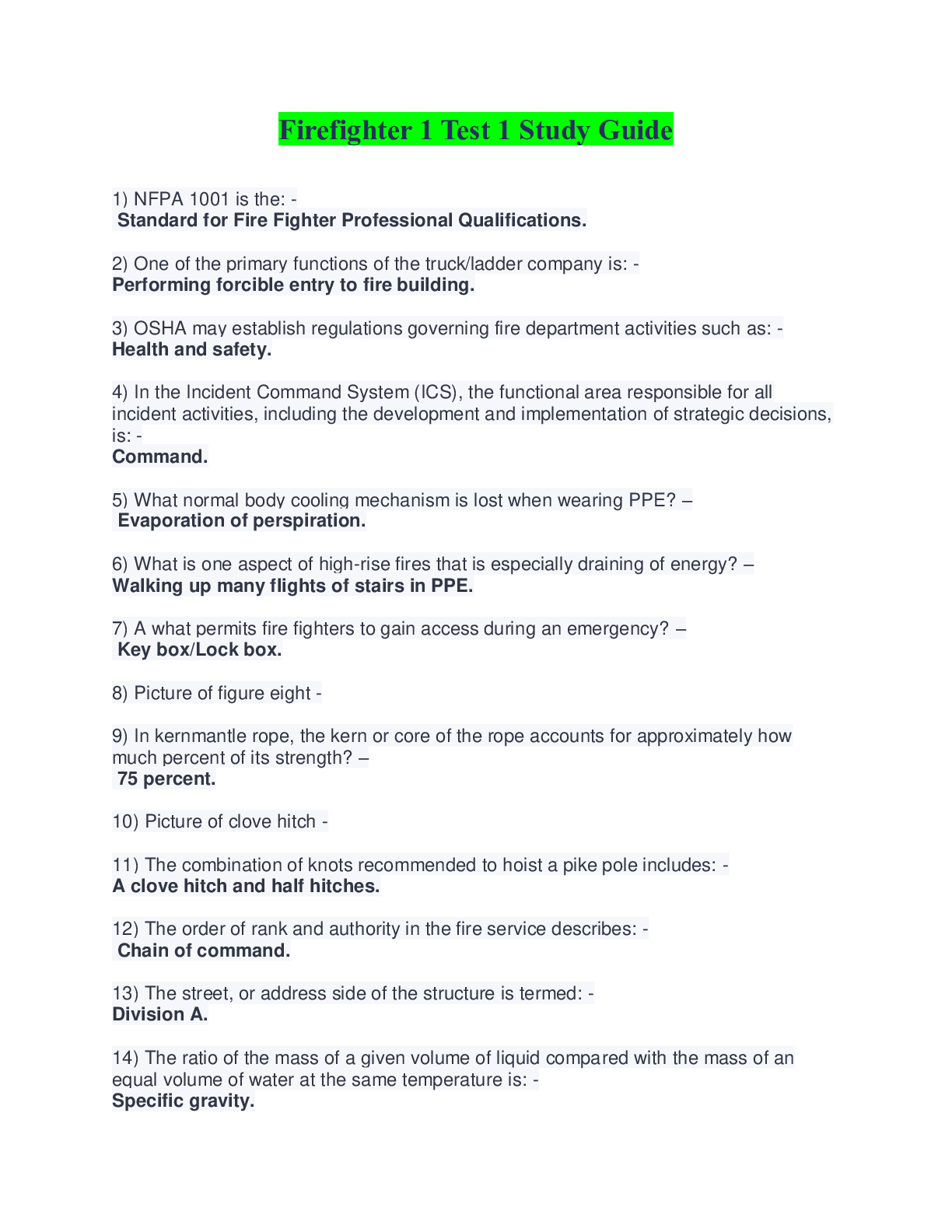
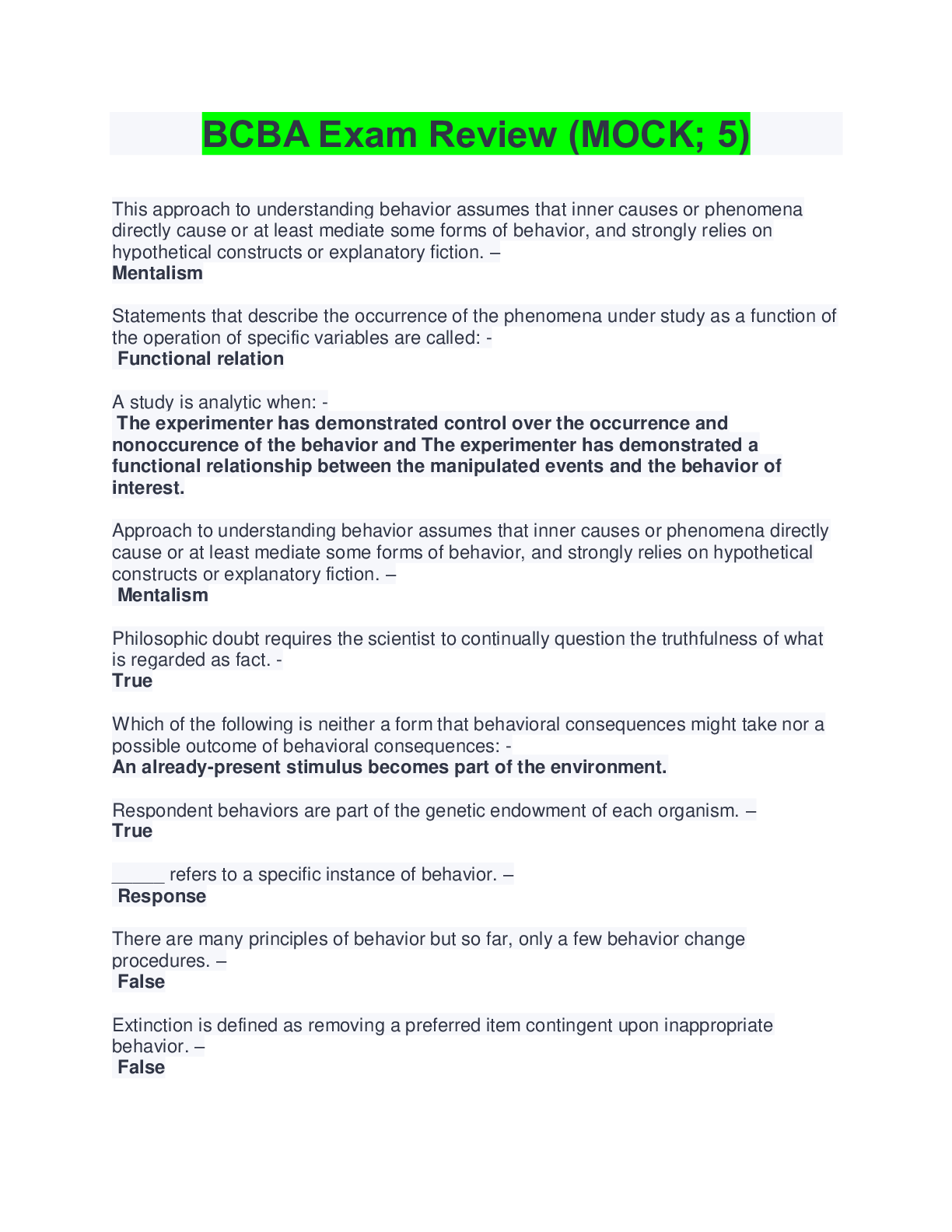
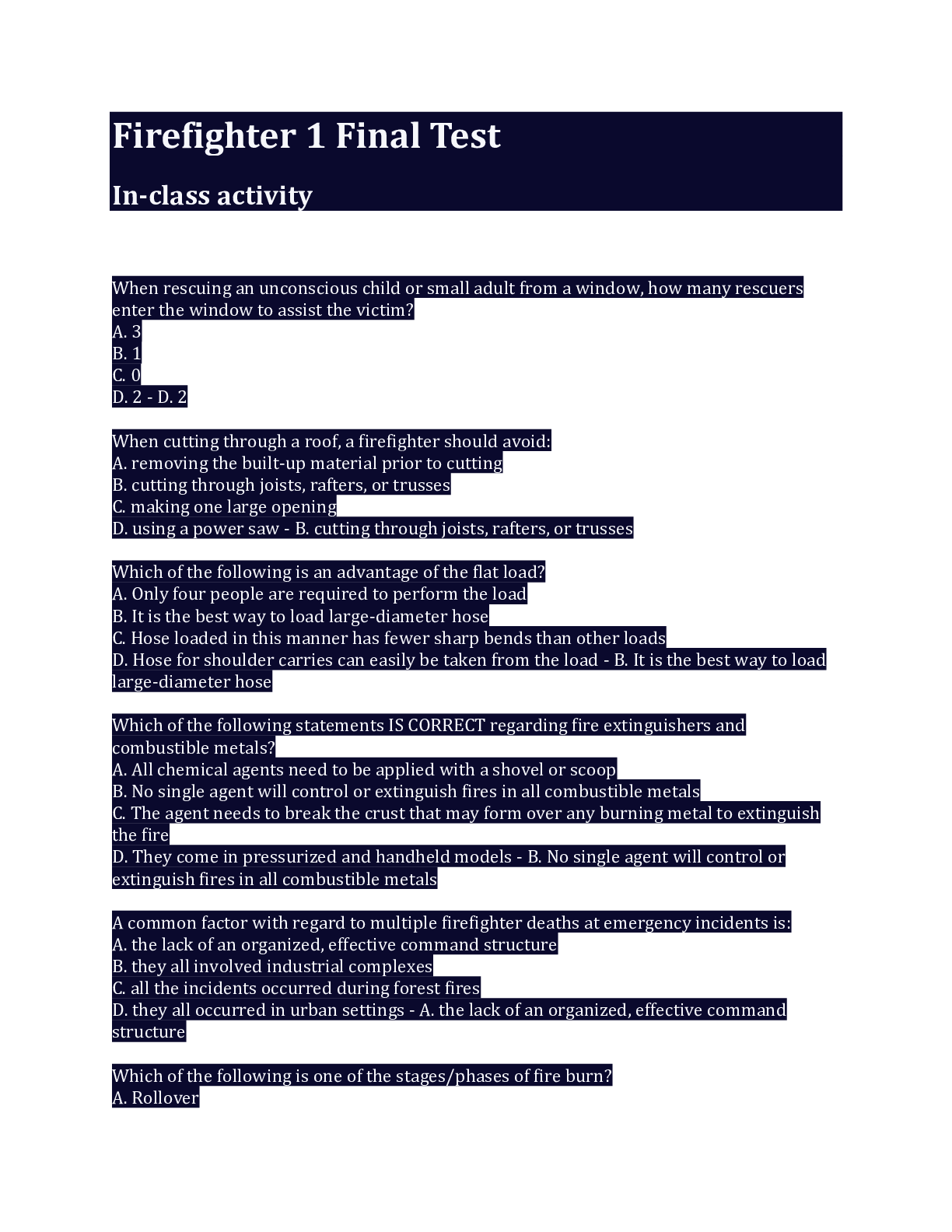
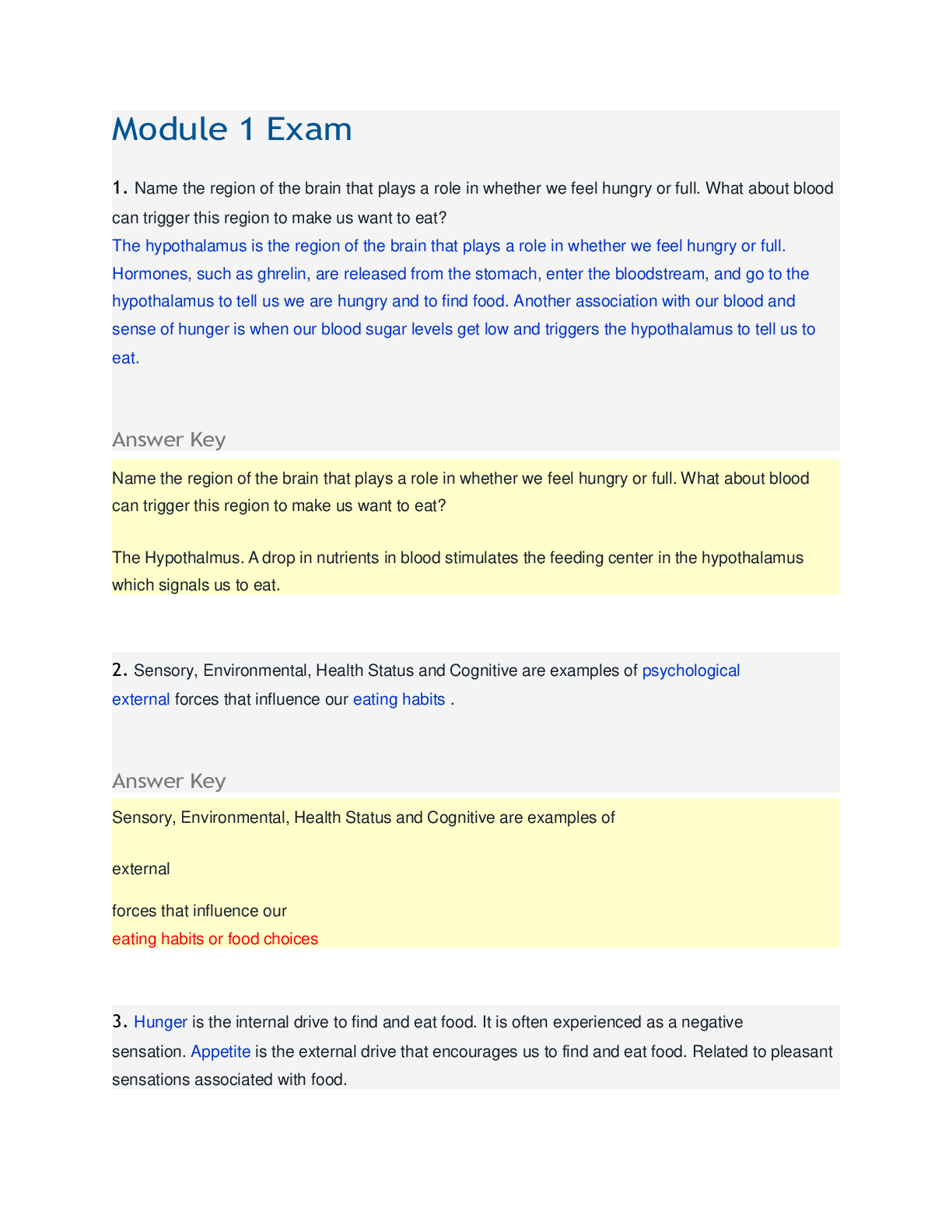
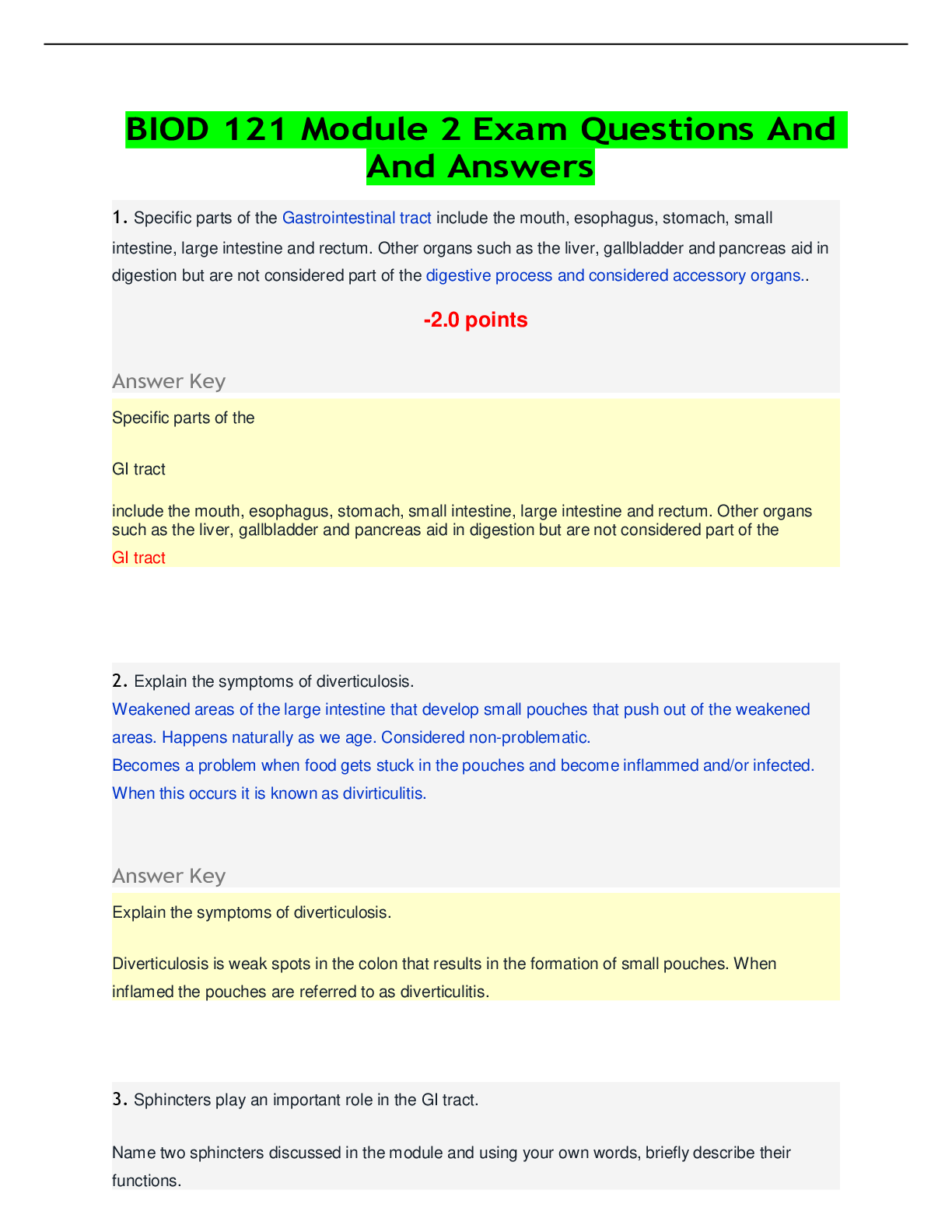
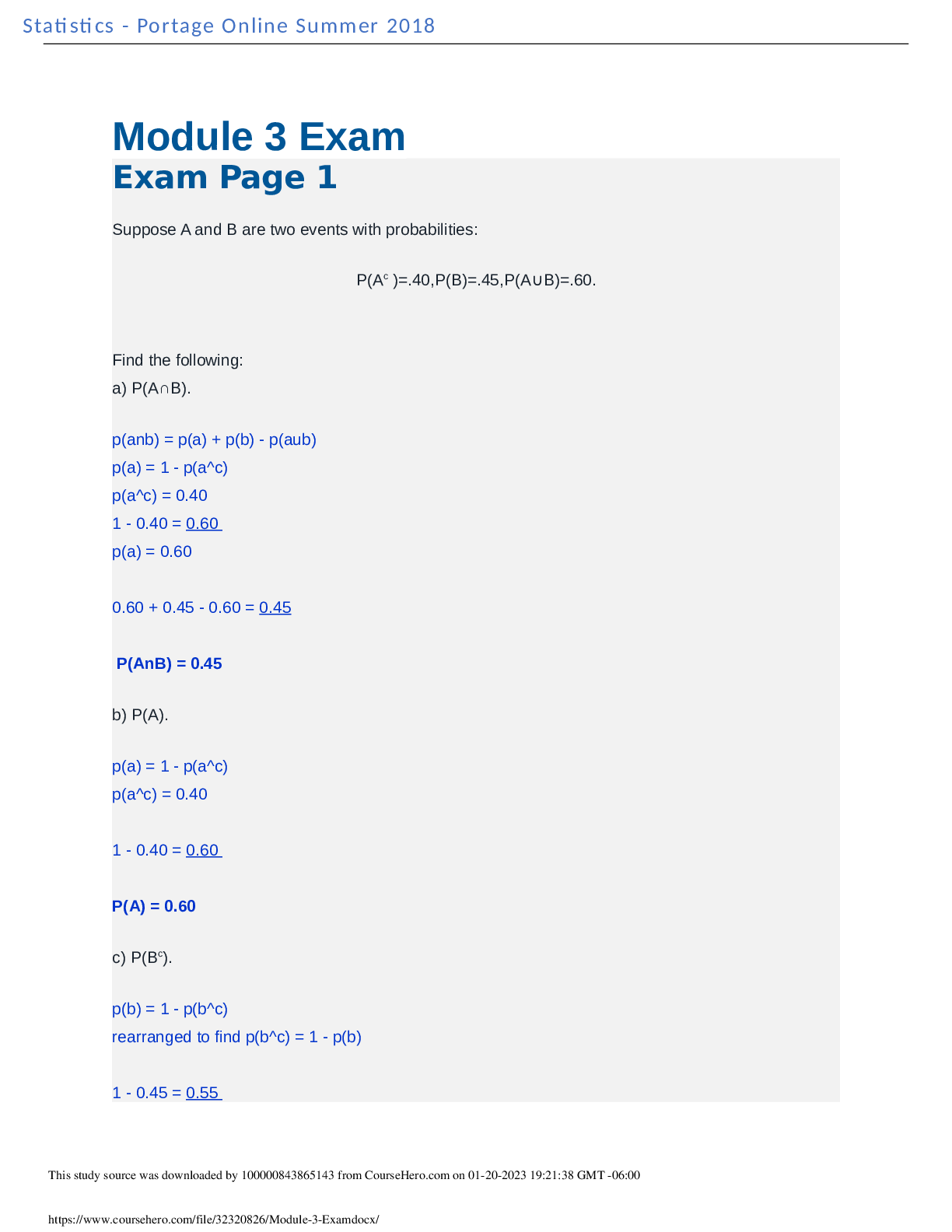
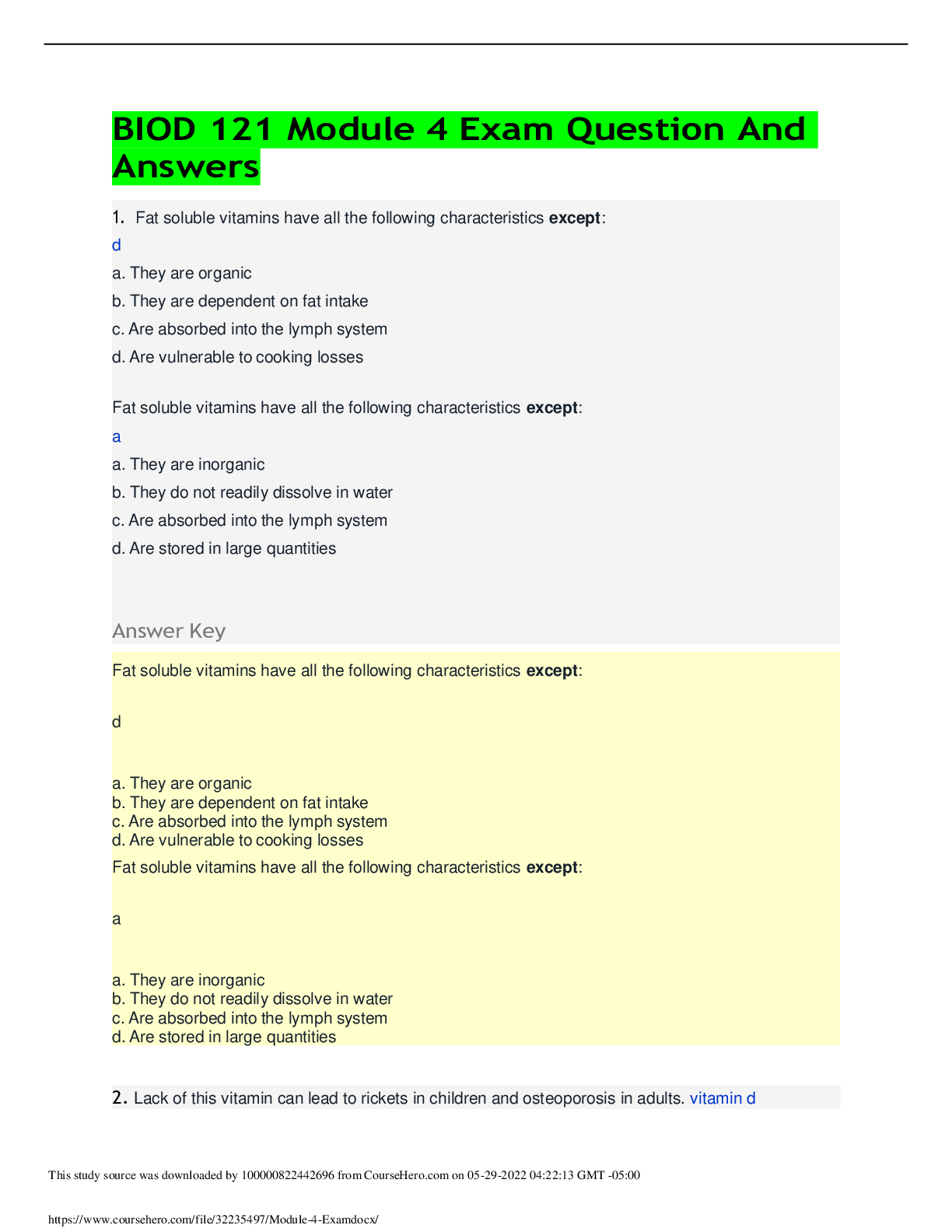
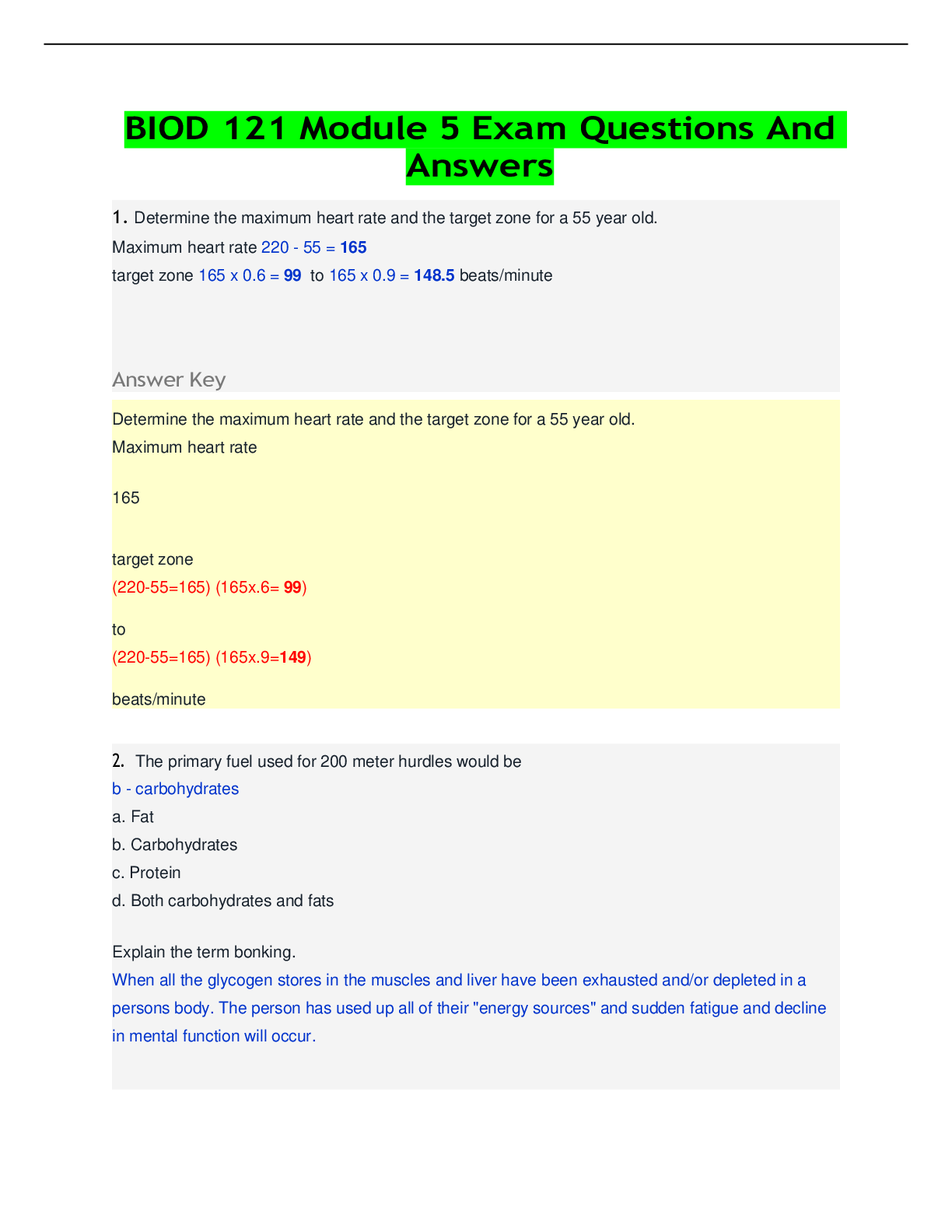
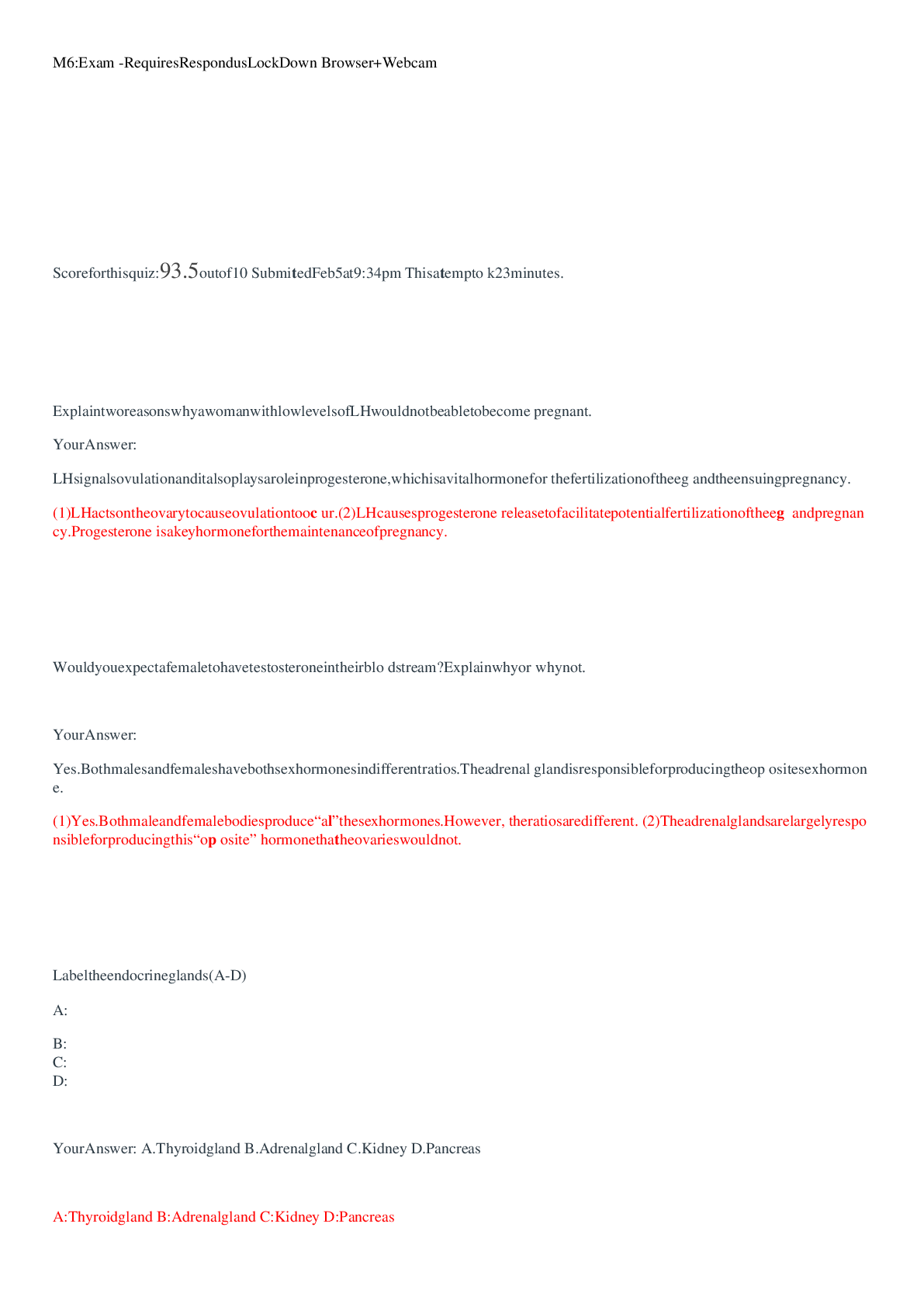
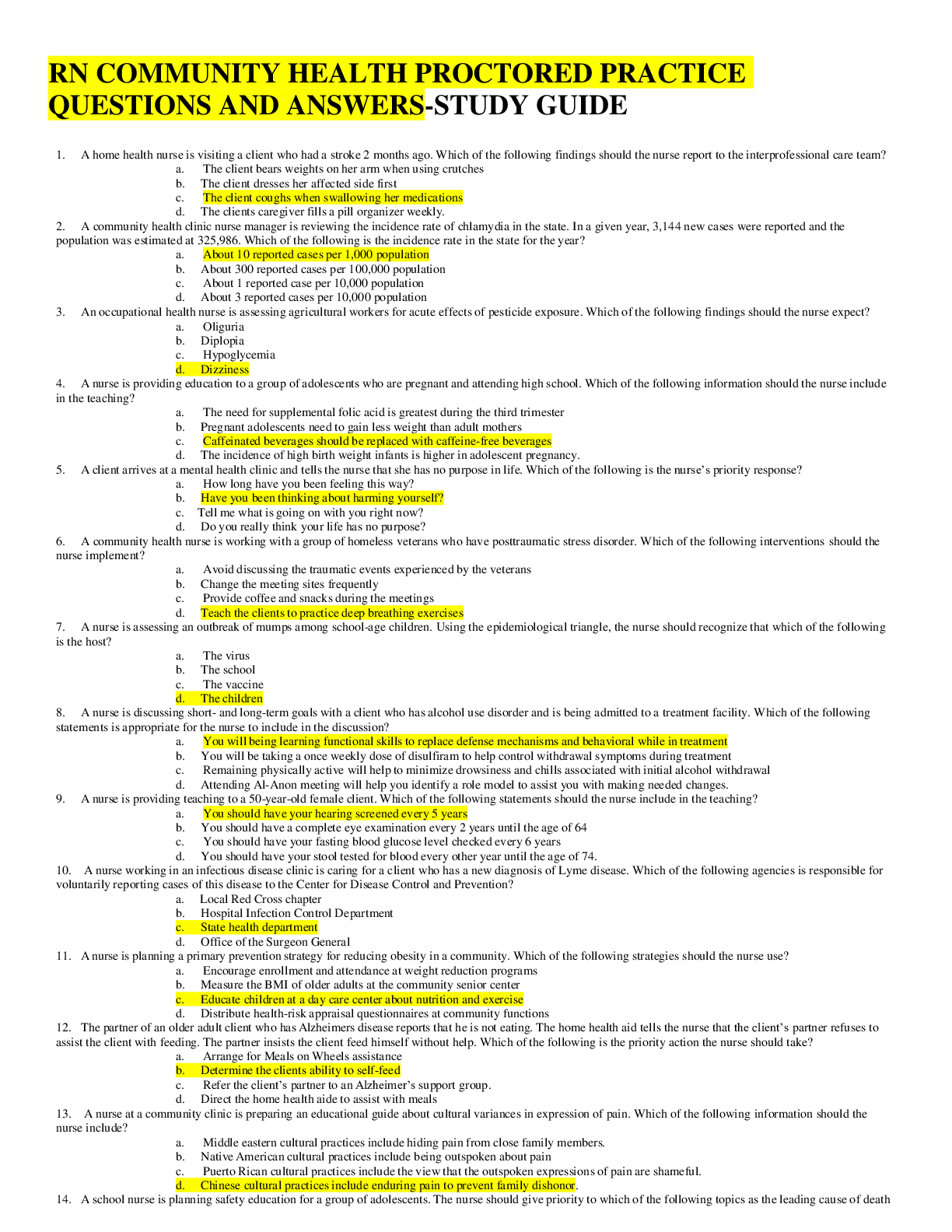



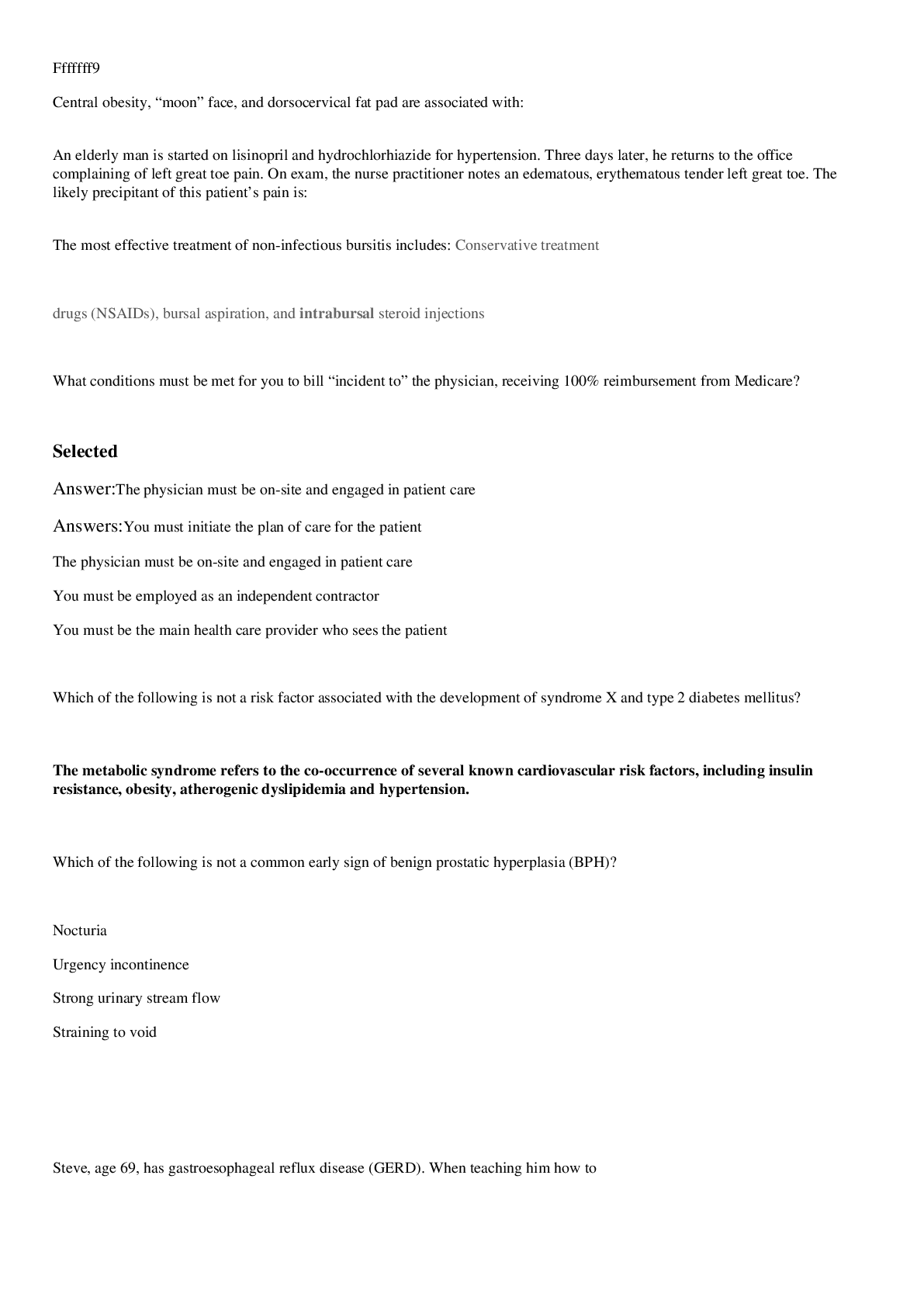
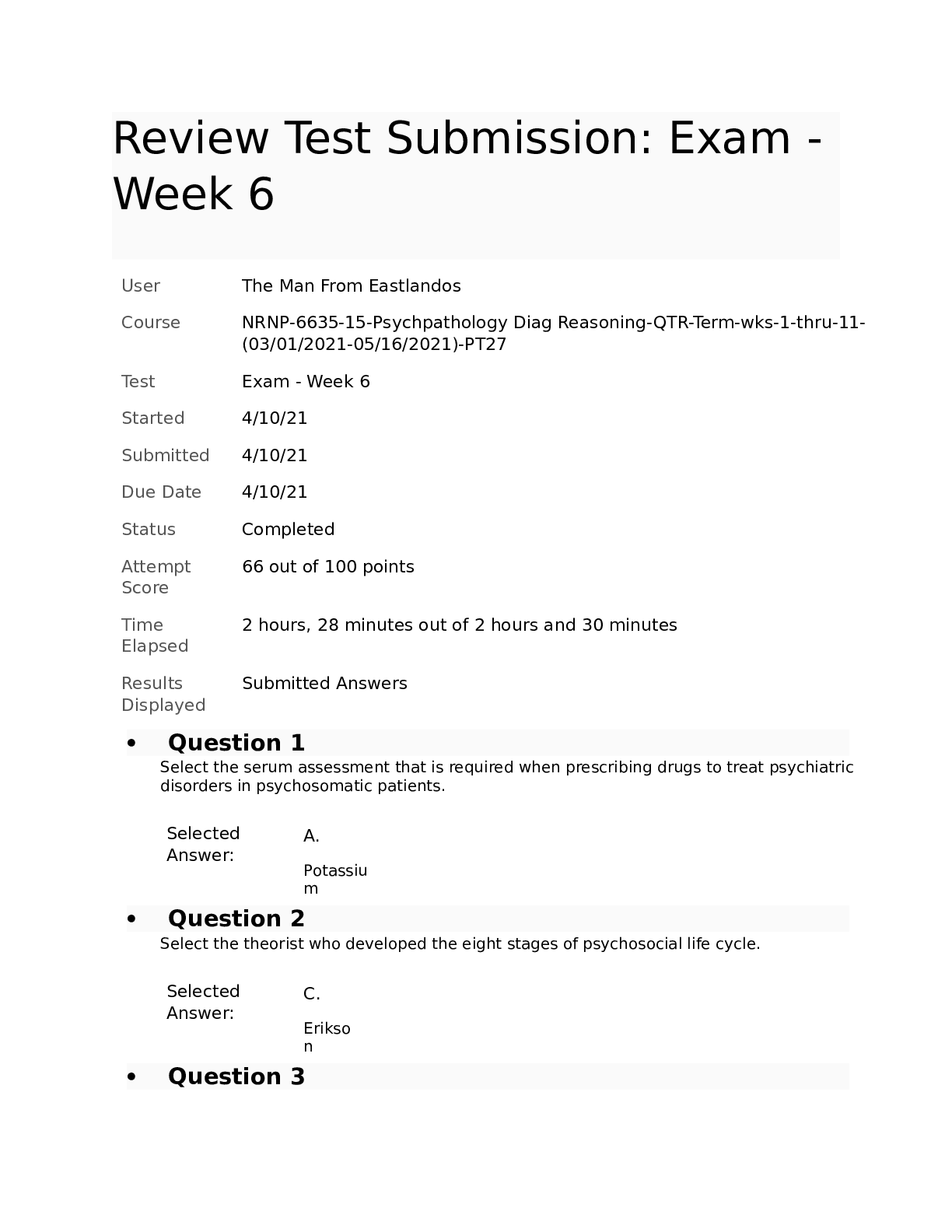
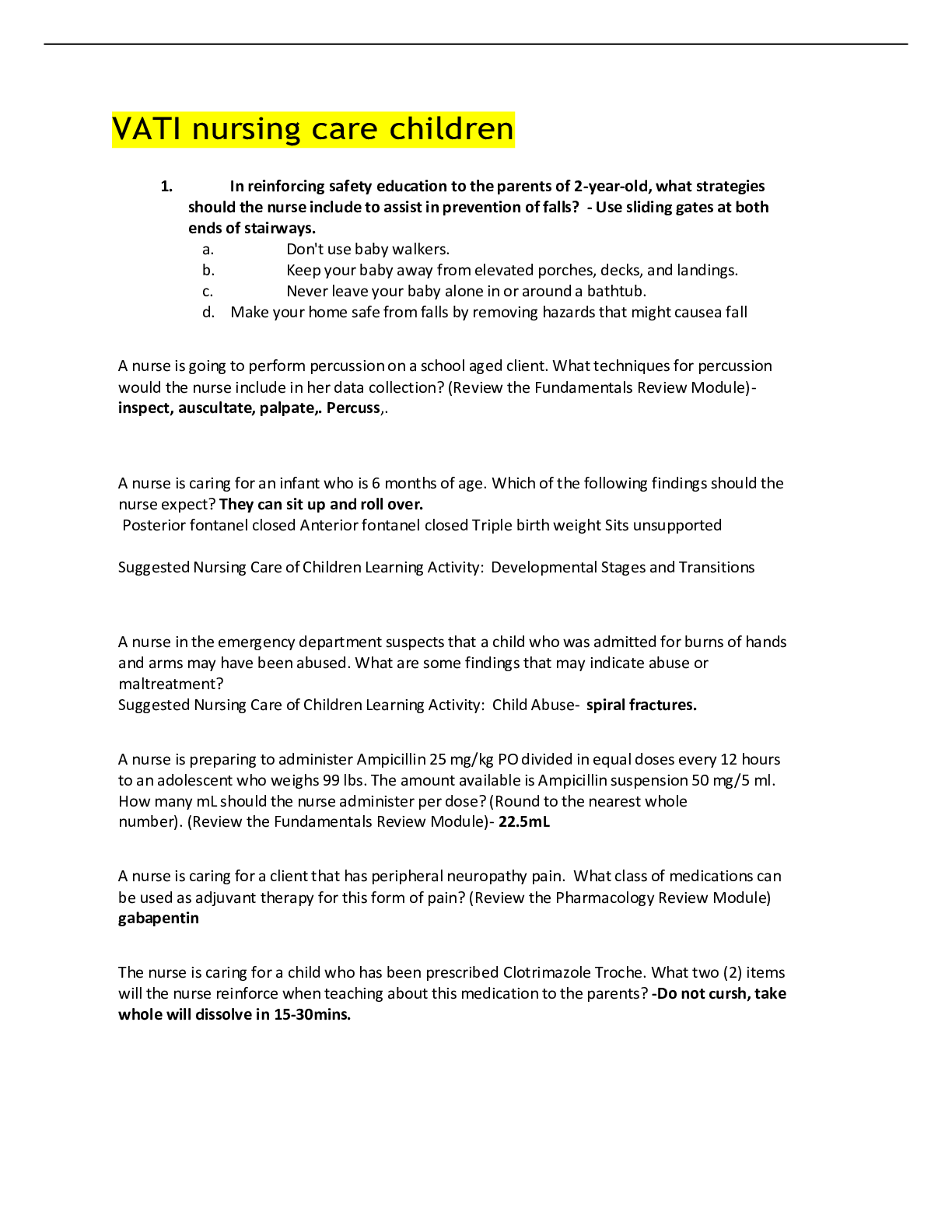
.png)




